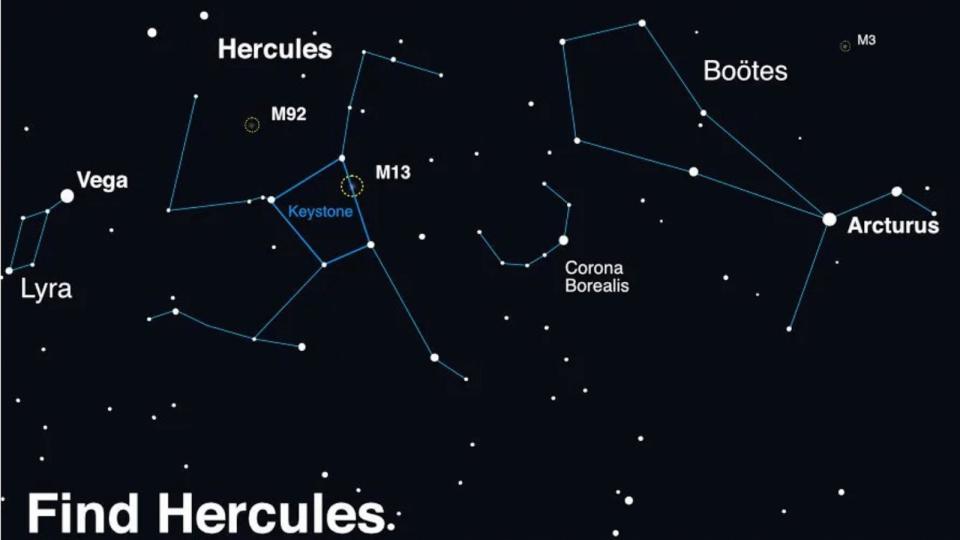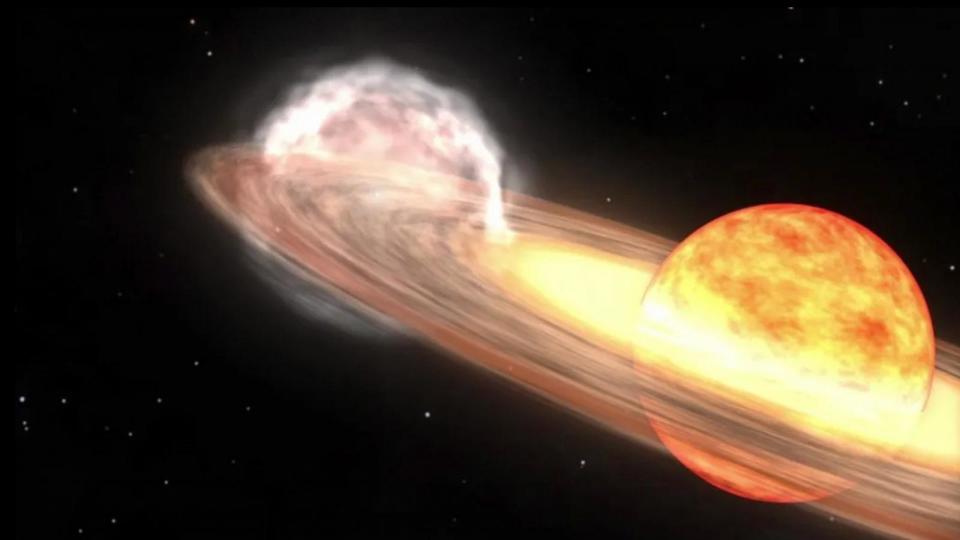Stargazers should have their eyes fixed on the skies, as astronomers say a “once-in-a-lifetime” view of an astronomical explosion is expected any night.
T Coronae Borealis, also known as the “Blaze Star,” is actually a pair of stars located 3,000 light-years away. The star system is a recurring nova, with Earth-visible explosions every 79 to 80 years, according to NASA.
The last recorded outburst from T Coronae Borealis — which includes a hot, red giant star and a cool, white dwarf star — was in 1946, according to the space agency, which forecasts it will do so again before September 2024.
MORE: NASA says star studied for decades is actually twin duo: ‘Our jaws dropped’
The star system is located in the Northern Crown, a horseshoe-shaped curve of stars west of the Hercules constellation, according to NASA, which reports viewers can look for it in between the bright stars of Vega and Arcturus.
When the explosion comes into Earth’s view, “it’s going to be one of the brightest stars in the sky,” Louisiana State University physics and astronomy professor Bradley Schaefer, told ABC News, encouraging the public to go outside and view the explosion as soon as it’s in view.
The exact day and time of the explosion are “unknown,” according to Schaefer, but looking at the star system’s historical behavior and current “pre-eruption dip” indicate the view of the explosion is imminent.
A pre-eruption dip is a sudden decrease in brightness that some celestial objects experience about a year before erupting, according to the American Association of Variable Star Observers (AAVSO), which announced T Coronae Borealis had faded in March 2023.


T Coronae Borealis, which is normally located at magnitude +10, which NASA reports is “far too dim to see with the unaided eye,” will jump to magnitude +2 during the explosion.
Schaefer has been studying T Coronae Borealis for decades, saying the chance to see the explosion from Earth with the naked eye will be “magnificent.”
“It’s a way of humbling ourselves for the titanic forces that are happening, fortunately, very far away, that’s happening above our heads,” he said, likening the power of the explosion to a hydrogen bomb.
“It really actually is a hydrogen-fusion bomb just like in the movie ‘Oppenheimer,'” Schaefer said.
The difference between nova and supernova events, according to NASA, is in a recurring nova, the dwarf star stays intact during the explosion. In contrast, a supernova occurs when a dying star is destroyed in one final eruption.
MORE: Water frost detected on Mars’ volcanoes in ‘significant’ first discovery: Study
“There are a few recurrent novas with very short cycles, but typically, we don’t often see a repeated outburst in a human lifetime, and rarely one so relatively close to our own system,” Dr. Rebekah Hounsell, an assistant research scientist specializing in nova events at NASA’s Goddard Space Flight Center, said in a June press release.


T Coronae Borealis is one of just 10 recurring novas known in the Milky Way that erupt on time scales of less than a century, according to NASA.
“It’s incredibly exciting to have this front-row seat,” Hounsell added.
The agency says during the event, the star system will be similar in brightness to the North Star, Polaris, and may shine this bright for days or a week after first appearing.
MORE: NASA seeks volunteers for a paid, yearlong simulated Mars mission
“Typically, nova events are so faint and far away that it’s hard to clearly identify where the erupting energy is concentrated,” Dr. Elizabeth Hays, chief of the Astroparticle Physics Laboratory at NASA Goddard said in the press release. “This one will be really close, with a lot of eyes on it, studying the various wavelengths and hopefully giving us data to start unlocking the structure and specific processes involved. We can’t wait to get the full picture of what’s going on.”
The exact date and time of the astronomical explosion is unknown, but once it happens, Hounsell says the once-in-a-lifetime event is sure to inspire the next generation of skywatchers.
“It’s a once-in-a-lifetime event that will create a lot of new astronomers out there, giving young people a cosmic event they can observe for themselves, ask their own questions, and collect their own data,” Dr. Hounsell said in the release, adding, “It’ll fuel the next generation of scientists.”
Nova explosion 3,000 light-years away will be seen from Earth with the naked eye originally appeared on abcnews.go.com
